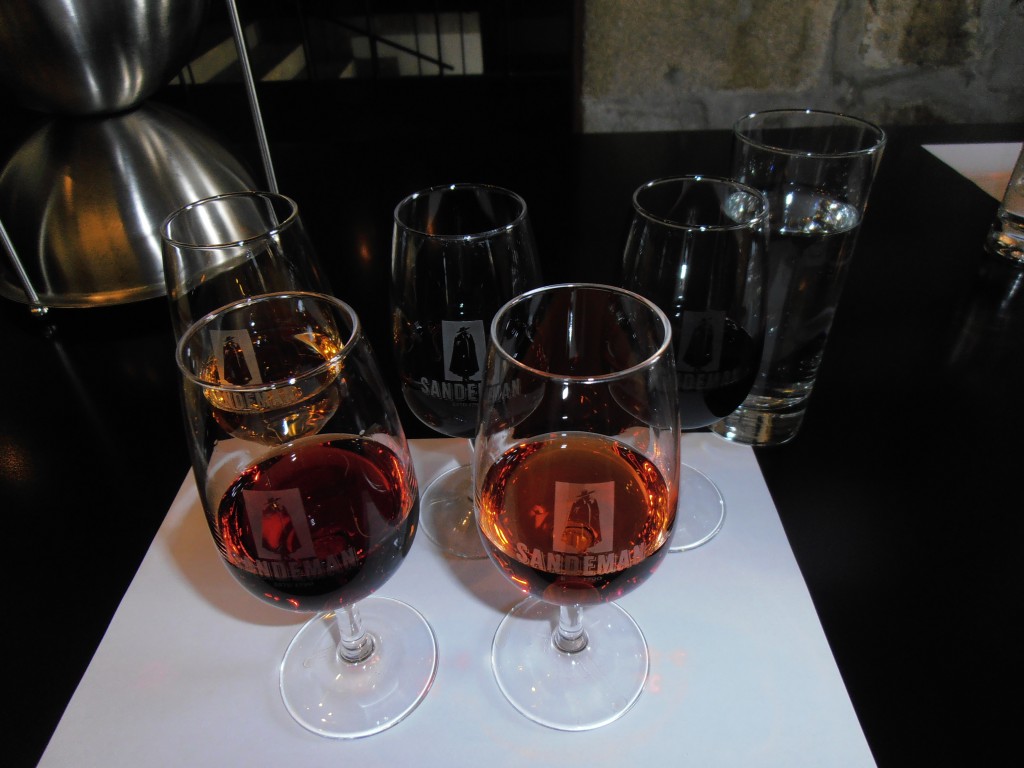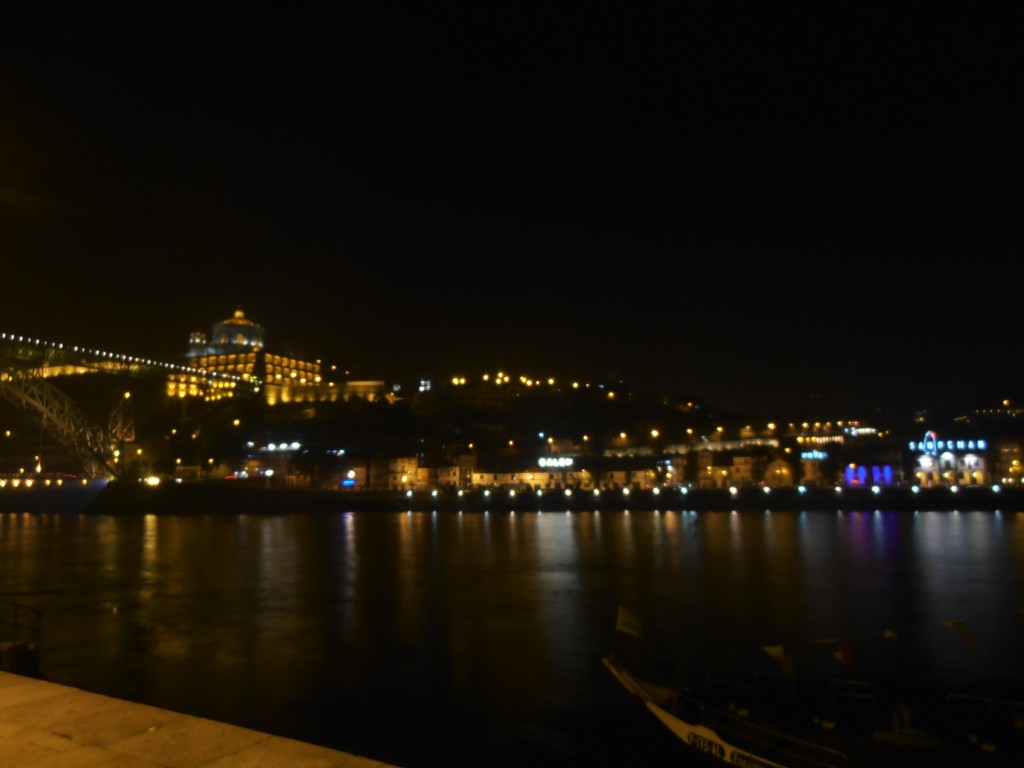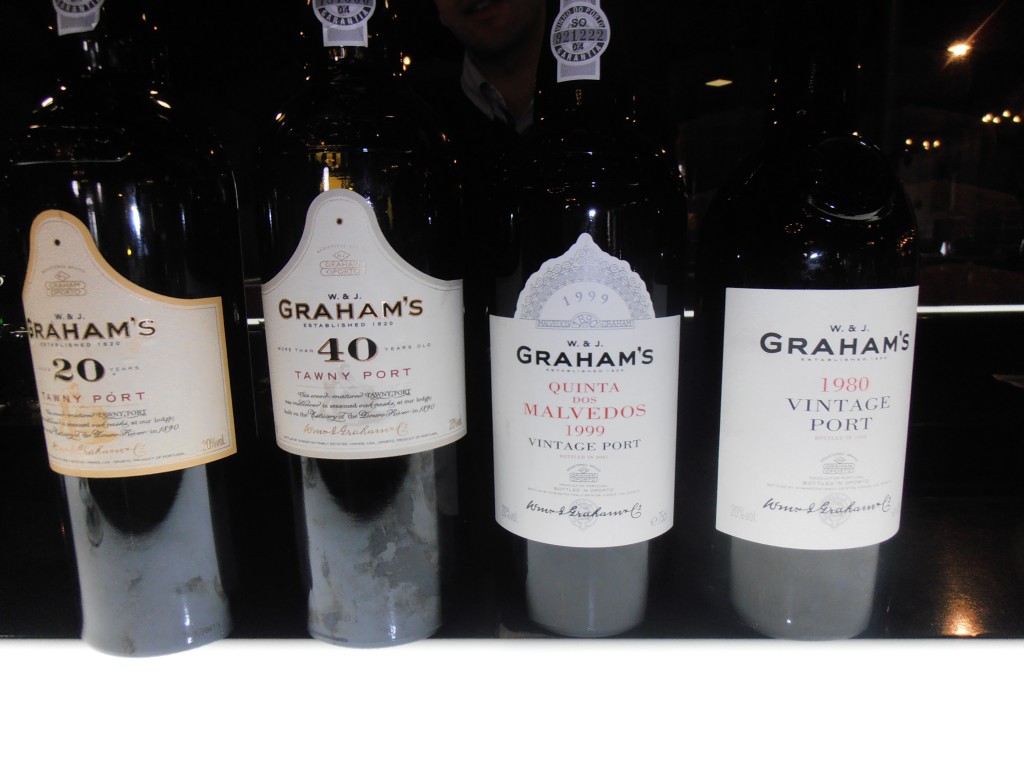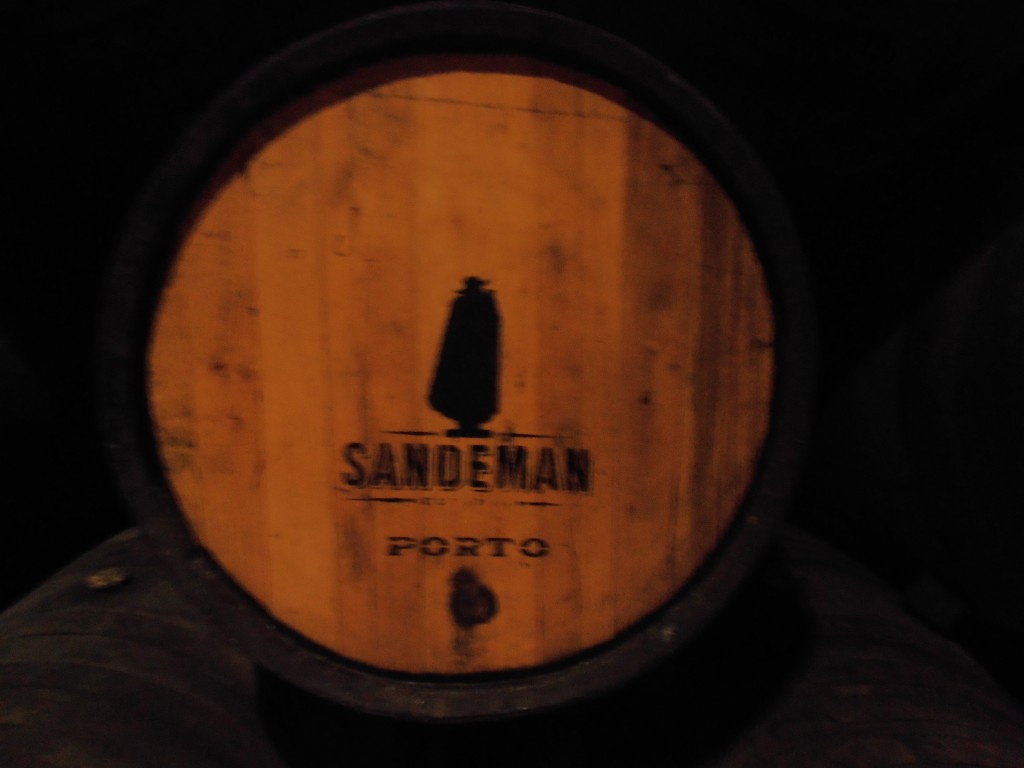In the run up to this Fridays’s first International #PortDay organised by the Centre for Wine Origins I would like to share the beautiful experience fellow #winelover Onneca Guelbenzu and I had visiting a few Port Lodges at the end of November. We felt very fortunate to learn more about the Port History and taste some amazing wines :-)
Port wine goes back to to the late 17th century, when the Brits where at war with France and the Bordeaux “Claret” trade had been ended. The British were on the look out for an alternative wine which could easily be shipped and found what they were looking for in the Douro. Originally, Port was not a fortified wine, but as the long journey tended to spoil to the wine by the time it arrived, a little brandy was added in the early 18th century to stabilize the wine. As time went by, the style of wine changed and around 1840, Port as we know it today, a sweet fortified wine of approximately 20% alcohol, became the dominant style.
Port is made exclusively from grapes grown in the Douro Region in the North of Portugal. The region was first officially demarcated in 1756 by Portugal’s then prime Minister, Marques de Pompal who had commissioned a detailed geographical study to pinpoint which areas where deemed to produce wines which would guarantee the high standard and quality Port wine was known for. There are 82 grape varieties allowed but the 6 most common ones are Touriga Franca, Tinta Roriz, Tinta Barroca, Touriga Nacional, Tinto Cão and Tinta Amarela. Port vineyards are classified from A to F by an incredibly detailed and complex system taking into account altitude, yield, soil type, vine training, vineyard location, grape varieties planted, slope, gravel content, exposure, vine spacing, shelter from the winds and age of the vines.
Since Port wines require extensive aging (minimum 2 years), and the Douro vineyard area was way too hot to guarantee a steady maturation in cask, the barrels were transported down the river to Villa Nova De Gaia, a coastal town on the other side of the Douro River from Porto. Here the Atlantic ocean breeze has a cooling influence and the climate is a lot more humid and suitable for aging. Hence in the 18th Century, all major Port Negociants or Houses set up Aging Lodges here where they matured their Ports.
The first Port Lodge we visited was Graham’s, which is situated a little higher on the steep river bank which accounts for the most amazing view up the Douro river from the tasting room. Just the view alone is worth a visit, it simply is picture perfect!
W & J Graham’s was founded in Oporto, in 1820 by William and John Graham. The Graham family was already an important shipping and merchant family focussing mainly on the textile industry, and it was the wool trade that had first brought them to Portugal. But with the increasing success of the Port in London and the rest of the UK, they soon started to specialize in the production and shipping of fine Port wines. The Graham family heavily invested in quality and over the years they purchased some of the finest vineyards in the Douro. In 1890 the Graham’s Port Lodge was constructed and it is here that still today all of the Graham’s Port is aged. The building holds around 4000 pipes as well as several large wooden vats which each can hold 173.000 litres.
In 1970 the Symington Family purchased Graham’s. The company is family run and the wine maker is Charles Symington. Before taking over as Chief winemaker in 2009, he had been working for 15 years with his very successful father Peter Symington, who received the International Wine Challenge for the Best Fortified Winemaker of the Year no less than 6 times.
The Symington Family owns 26 Quinta’s – with their 2052 hectares, of which 986 hectares under vines, they are the largest land owner and 75% of the grapes used for their production are Estate Grown.
All their top wines are 100% Estate grown and in the last decade they have also invested in the production of Douro DOC wines.
Graham’s focusses on the top end of the market and is especially renowned for their vintage Ports.
We tasted the following wines and Ports:
P +S Post Scriptum de Cryseia 2009 Douro DOC: This blend of 40% Touriga National and 60% Touriga Franca deep ruby in colour with a nose of red berries, cherries and some kitchen herbs. The wine has a great acidity, good weight and tanin structure, flavours of tart red fruit, some acacia berry and ripe pommegranate, a little casis leaf and sweet liquorice in the finish.
P +S Cryseia 2008 Dour DOC: The Cryseia is a blend of 65% Touriga National and 35 % Touriga Franca which has been aged 10 months in new French oak barriques. Again it is deep ruby in colour, with a large watery rim and a black fruit and meaty nose. It’s a complex and very layered wine with a great tanin structure, good weight and plenty of acidity. In the middle palate I get lots of black plum, mulberry, and some ripe black berries and a hint of Biltong; some rosemary, thyme and fresh laurel leave in the lingering finish.
Graham’s Late Bottle Vintage 2006: Lucious, rich wine, with lots of cassis and acacia berry on the middle palate, and a nutmet and liquorice finish.
Six Grapes Reserve Port: This Port is made from 100% A grade grapes and the 6 stand for 6 stars – a measurement used to indicate the highest quality wines. Medium sweet wine with strong red fruit flavours (berries and plums) and clove, nutmeg and white peper in the finish
Graham’s Aged 20 Years Tawny Port: Deep copper in colour with a rich nose of dried figs and roasted hazelnut. Luscious layered wine with strong roasted walnut flavours, lots of dried sultana, figs and dates, and a candied pecan and nutmeg finish.
Graham’s Aged 40 Years Tawny Port: Light copper brown in colour with a nose of toasted nuts and dried dates. Luscious complex wine with flavours of roasted hazelnuts, candied pecans and a little roasted walnut, a few hints of very dry and sweet raisins and dates and a sweet candied nut finish.
Graham’s Quinta do Malvedos 1999 Vintage Port: An elegant yet rich wine with a concentrated blackcurrant nose. On the palate this wine is sweet, with integrated almost velvet tanins, good weight and lots of blue and black berry flavours, and some distinctive “double salted” liquorice in the long finish.
Graham’s 1980 Vintage Port: Ruby in colour with an orange rim and lots of candied red fruit on the nose . Velvety, elegant and complex wine with great weight, amazing freshness and a medium sweetness. Lots of candied cranberry and red berry flavours, laced with some toasted nuts and dried, leathery meaty flavours – reminiscent of game Biltong and an almost smoky finish. I absolutely adored this wine as there were so many layers and so many different flavours intermingled!
The next morning we visited Sandeman’s. Unlike Graham’s, the Sandeman story started in London. In 1790, young Scotsman George Sandeman bought his first wine cellar in the city and started trading in Porto and Sherry from Tom’s Coffee House. In 1811 Sandeman purchased an aging cellar in Villa Nova de Gaia on the banks of the Douro River. The Sandeman’s Port Lodge is a grand building, designed by Joaquim da Costa Lima Sampaio, who also designed Porto’s Royal Palace. The Lodge hosts a small museum covering all the highlights in the Sandeman history.
Sandeman’s has always been an innovative and brand focussed company. In 1805, they were the first company to fire-brand their trademark on all pipes they sold. The idea behind this was to assure the wines quality and create customer loyalty. For the same reasons Sandeman became the first Port House to export bottled and labelled wines in 1880. The Sandeman brand has been registered since 1877 and is one of the oldest brands in the world.
Sandeman was also the first wine company to use a logo as part of their branding. The Sandeman Don was created by George Massiot Brown in 1928. The Don incorporates both Sandeman’s Sherry and Port elements – The dark cloak refers to the black cape worn by students in Porto and the Sombrero is worn by the caballeros in Jerez. Since the 1930’s the Don has been an integral part of both bottle labels and advertising and today it is what immediately comes to mind when someone refers to Sandeman’s.

Our Sandeman Port tasting - from left to right starting from the back The Sandeman Apetiv, Sandeman Founders Reserve, Sandeman Vau Vintage Port 2003, Sandeman 10 Years old Tawny and Sandemans 20 Years old Tawny
Also in the vineyards and winemaking Sandeman’s has tried to be a bit more innovating. I noticed this especially in the first and third wine we tasted:
Sandeman APITIV White Porto: Light copper in colour with a fresh nose reminiscent of orange peal and a hint of sweet almonds. It’s a fresh yet lush wine, which tastes of tangerine marmelade with a hint of pecan in the finish. Sandeman show here that they once again think outside the box by giving several long drink recommendations for this wine. It is a way to get a new audience used to Port in a fun way!
Sandeman Founders Reserve Porto: Deep ruby in colour with some dark plum and pink pepper on the nose. It’s a medium sweet wine, with great acidity and flavours of dark plum jam and preserved sour cherries in the middle palate and a Christmas spice (clove, nutmeg, orange peal and cinnamon) finish.
Sandeman Porto Vau Vintage 2003: Deep ruby/purple in colour, with a fragrant wild raspberry nose. Wow, this wine is a red fruit bomb! Wild raspberries, ripe strawberries, red currant and plump red cherries are all present here, with just a hint of cedar in the finish. This wine is made in an early drinking vintage port style, and released after about 5 years of aging in the bottle. Unlike other Vintage Port’s it is best drunk young, however it can be aged up to 15 years. Once again by making an approachable young Vintage Port Sandeman is aiming to expand the Vintage Port audience :-)
Sandemans Ten Years Old Tawny: Pale ruby/dark coppery in colour, with a Christmas spice nose. Rich yet incredibly fresh with integrated tanins and flavours of orange blossom, citrus peel, a little prune, some toasted nuts and a spicy and amazing saline finish.
Sandemans Twenty Years Old Tawny: Bright copper in colour with an amazing rich nose of toasted walnuts, pecans and carré confiture. This is a complex wine with an integrated tanin structure and different layers of nutty flavours – toasted macadamia turns into candied pecan which in turn acquires toasted walnut flavours which evolve into roasted hazelnut and freshly roasted chestnuts. The fruit goes from juicy sultana’s, candied orange peel, caramelized apple to warm sticky apricot jam. The finish is spicy with a hint of fresh roasted coffee. This wine is one of my all time favoured Ports. It is amazingly versatile and pairs well with lots of different dishes. I have tried it with a blue cheese and caramelized apple souffle, roasted parsnip and chestnut soup and a carré confiture and all three have worked well yet the wine tastes distinctively different depending on the pairing!
So I hope that reading about these amazing Ports as well as the long Port history has wetted your appetite and enthused you to join us on twitter to celebrate #PortDay this Friday (27th January)!!



